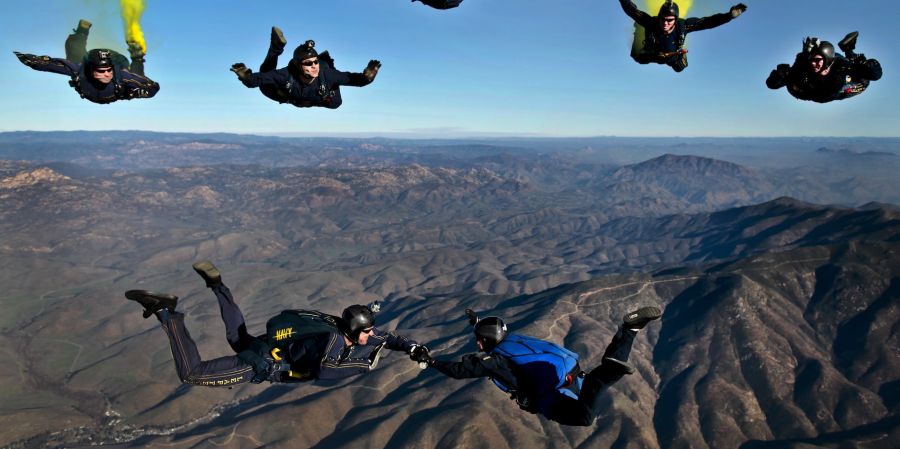

The technology behind skydiving has evolved to make our sport safer and more scientific than ever before. Many developments over the years have made it possible to automate parachute release and track movement.
Here's a look at some of how the technology behind skydiving has evolved and how it's used in Skydive Paraclete XP.
Over 3 million people skydived in the US in 2016. it's huge. But what do you know? Even if they all jump off with fun skydiving facts in their pockets, I'm sure there's still plenty of skydiving facts left in the ground.Our sport is very unique, fascinating and historical. There must be as many interesting facts about skydiving as there are skydivers. Here are some of our favorites. 1. Jay Stokes holds the record for most fall jumps in a single day.
640!
This equates to just under 27 skydives per hour on average for him. This required the full concentration of the caffeinated ground crew. At the end of that epic day, they basically stuffed an exhausted Jay into his gear, lifted him up to the side of the plane, and when the plane began to roll down the runway for another takeoff. It held him back. This record raised a lot of money for charity (and is sure to impress every experienced skydiver on the planet).
He tried to make a 700 in another attempt, but the weather got in the way. (For comparison:
Most sport skydivers call it about six hours a day. )
2. Tandem equipment is equipped with "AAD".
Tandem skydiving equipment is equipped with an automatic activation device (“AAD”). So do nearly all sporting skydivers.
The device was developed in the early 1990s by a German skydiver named Helmut Cross after he lost a friend who was unable to manually deploy a parachute. Helmut's invention - AAD "CYPRES" - saved the lives of hundreds of paratroopers. 3. Not all skydivers fall at the same speed.
Some fall faster. A little late. You can also change your posture when jumping to speed up or slow down aerodynamically. Experienced skydivers sometimes fly with weights to adjust their free fall speed so they can stay level with other skydivers in the sky. 4. Skydiving photographers operate the camera with their mouths.
You can imagine how difficult it would be to use the camera while skydiving as you would on the ground. Especially if your job is to capture professional images. To ensure a successful shot, the "camera flyer" invented a way to release the shutter with your mouth.
Next he has three ways.
"Tongue switch" "Bite switch" "Punch switch". To use the tongue switch, the photographer holds the shutter button between his teeth and presses the button with his tongue. The advantage of this setup is that the action you use to release the trigger is separate from breathing or chewing, making accidental triggering difficult. However, it must be held in a certain position for it to work properly. The second method, the bite switch, releases the breech when the fryer bites the compression switch between its teeth.It's easy to do reliably, but easy to miss trigger. The final method, Blow His Switch, works when Fryer blows into a tube he holds in his mouth. Some flyers like it this way, but if you lose your mind and hold your breath for a moment, it won't work.
